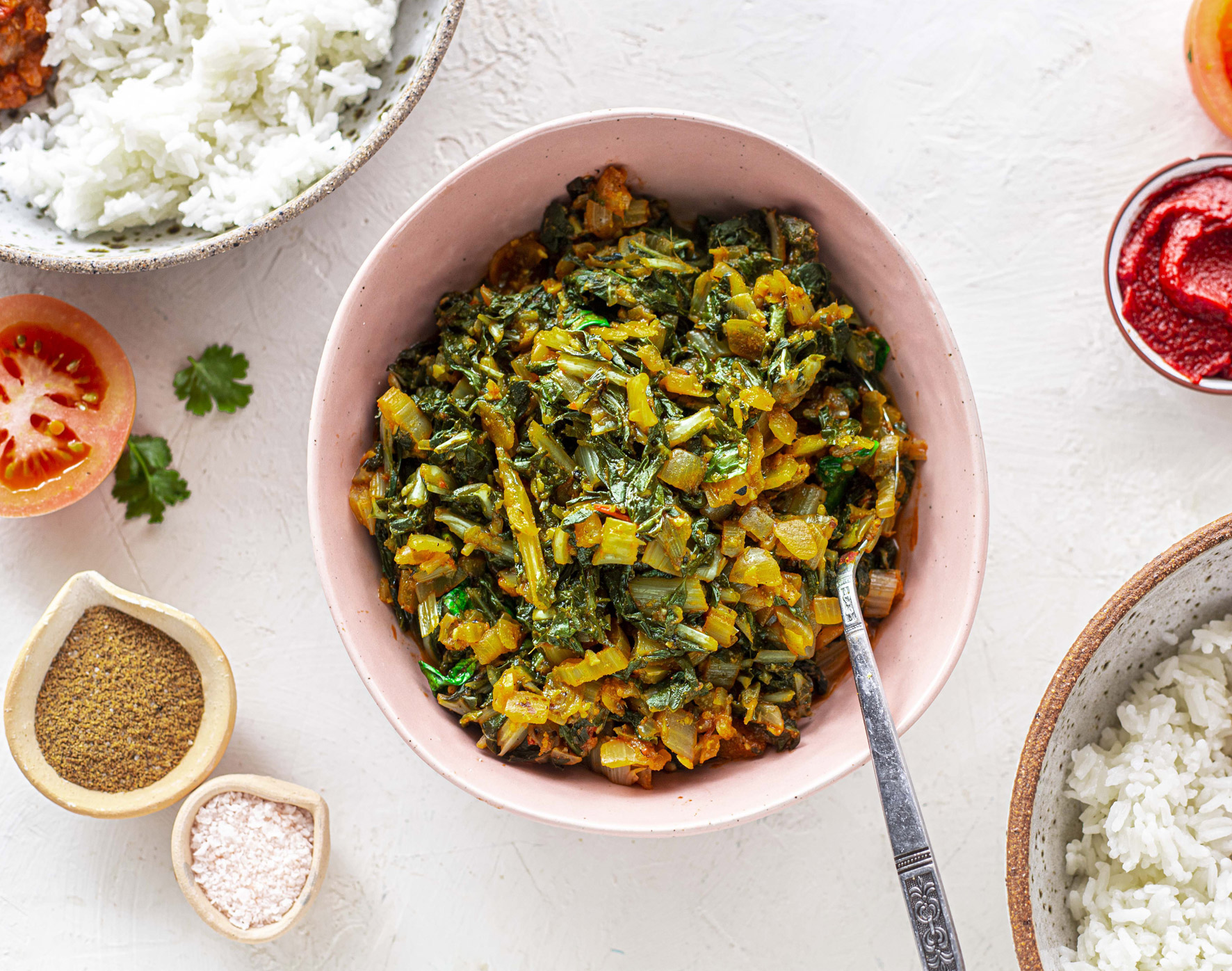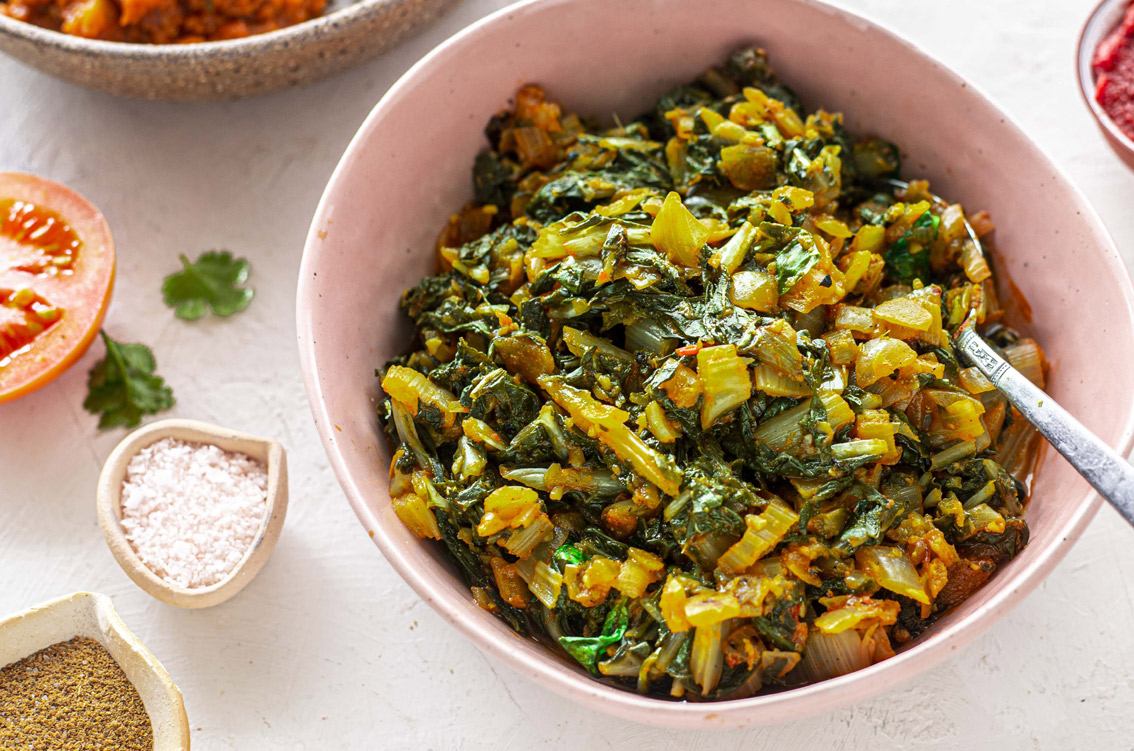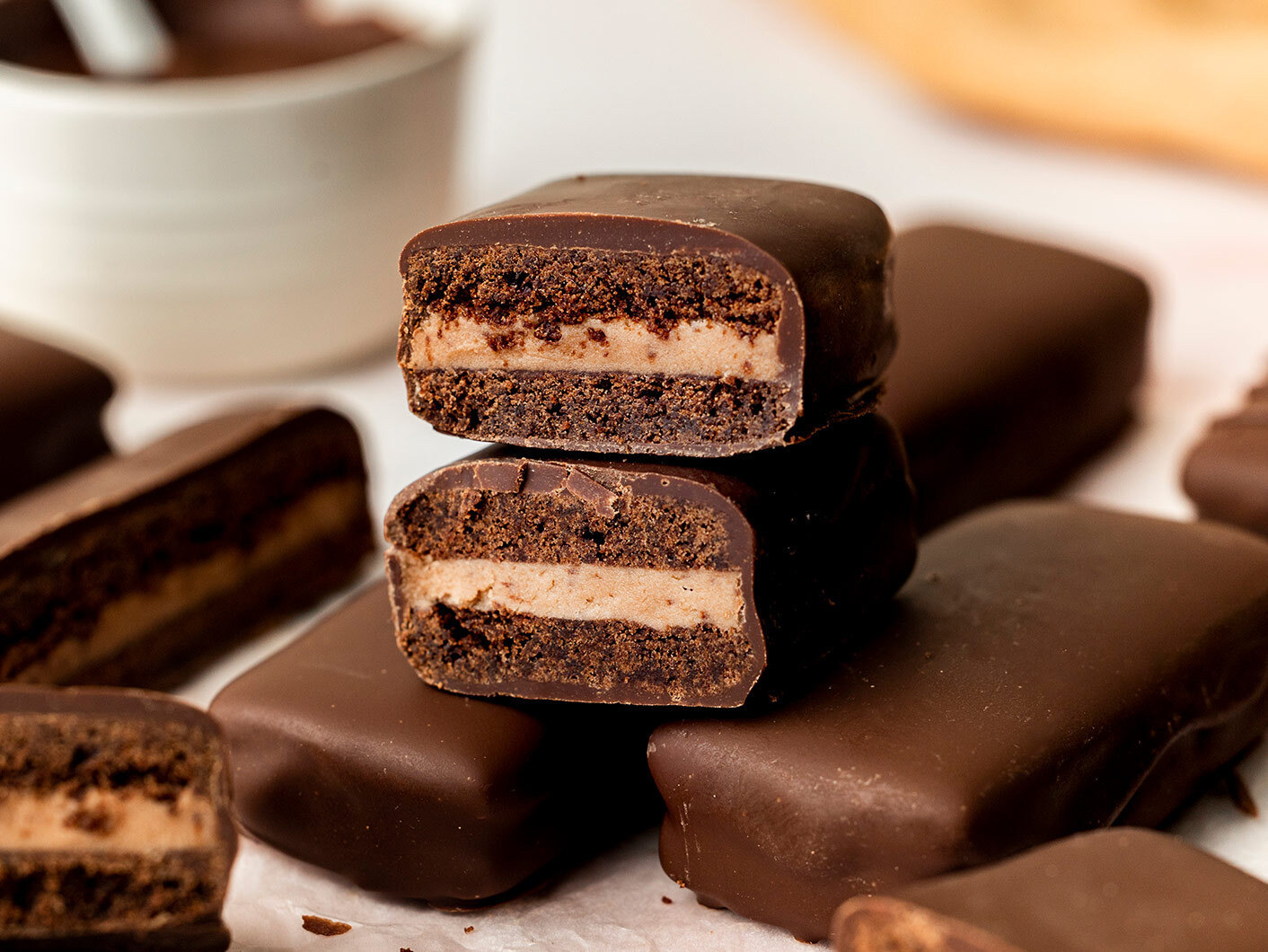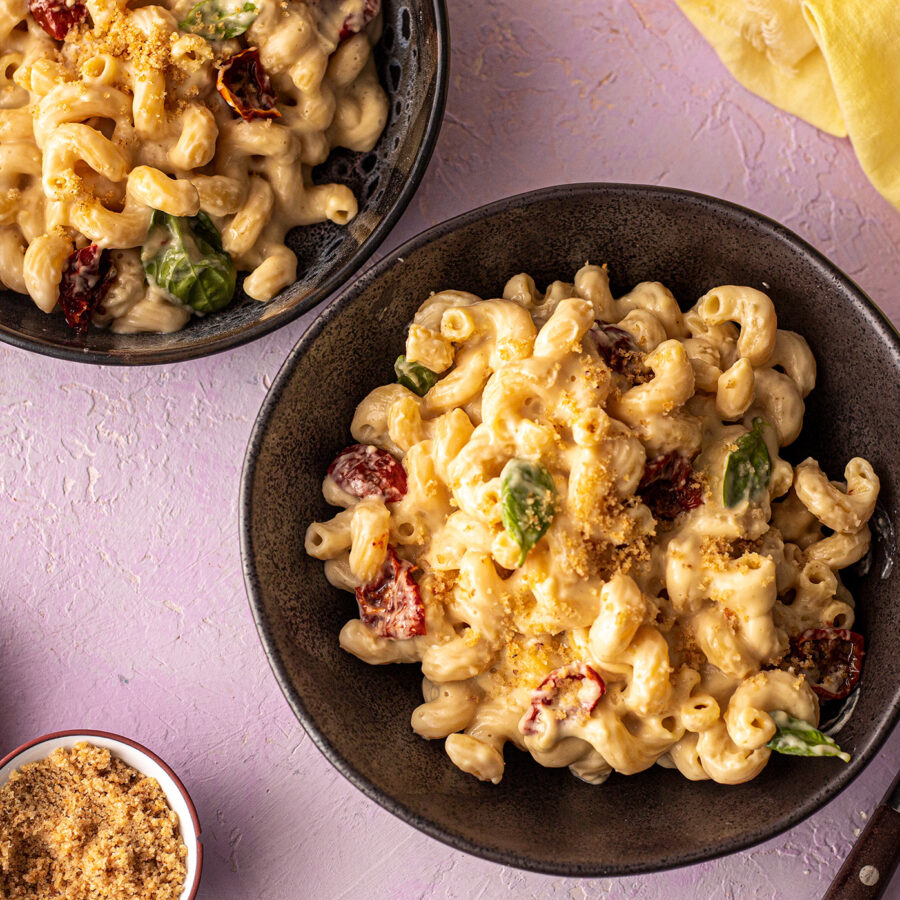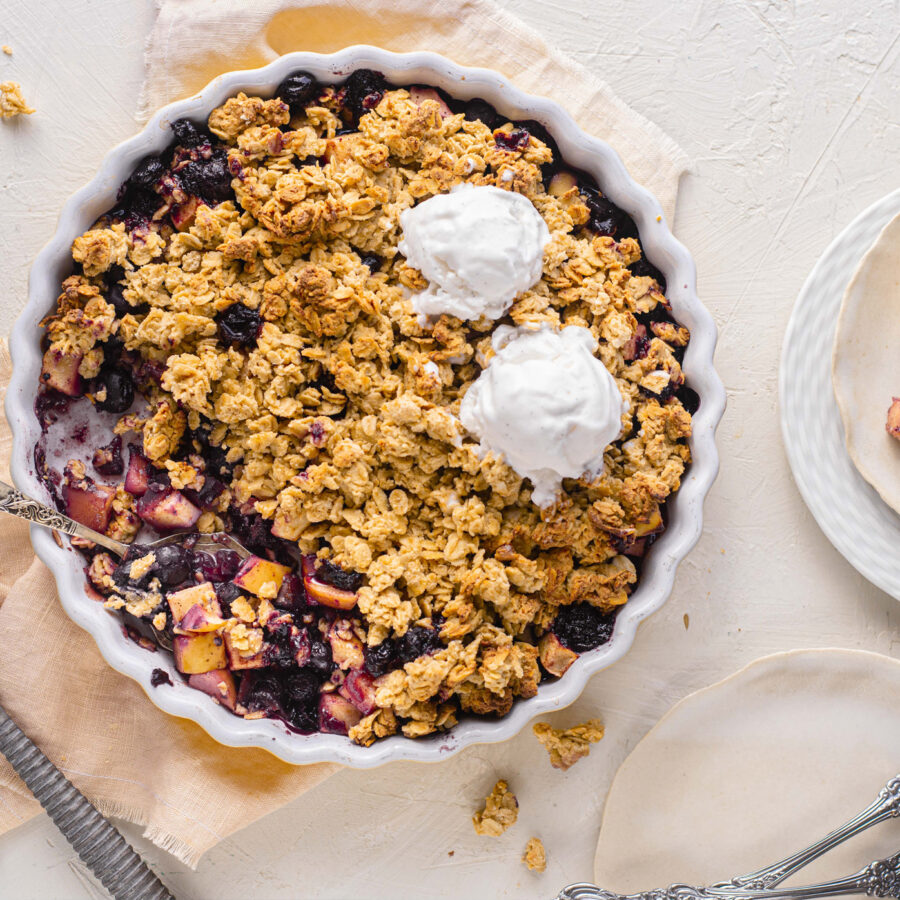
Ethiopian Spiced Greens Recipe
Healthy choice
Mostly whole foods
Gluten-free option
Soy-free option
Refined sugar free
Oil-free option
Nut-free option
Budget friendly
Easy peasy
One-pot recipe
Comfort food
Lazy dinners
Salads
Ethiopian food has a reputation of being heavily plant-focused, and generously spiced. These greens pack enough flavour to be the star of the show, or work beautifully as a side dish to some Ethiopian red lentils and rice.
You will need
Serves 4
- 1 bunch silverbeet or other tough greens
- 1 tablespoon olive oil (or sub water)
- 1 brown onion, finely diced
- 3 cloves garlic, crushed
- 3 cm piece of ginger, grated finely
- 2 teaspoons ground coriander
- 2 teaspoons ground cumin
- 1/2 teaspoon smoked paprika
- 1/2 teaspoon cardamom (optional)
- 1 tomato, chopped roughly and finely
- 1 cup vegetable stock (or sub water)
- 1/4 lemon, juice and zest
- Salt to taste
To serve (optional)
- Rice or injera bread*
- Ethiopian red lentils
Recipe: Rainbow Nourishments
Directions
-
Step 1
To prepare the silverbeet, remove the bottom part of the stems not attached to any leaves and discard or reserve for another use. With the remaining greens, separate any white stems from the green leaves. Finely chop the stems and roughly chop the leaves. Set aside.
-
Step 2
Heat the oil in a large fry pan or shallow pot over high heat. Add the onion and sauté for 2 minutes or until slightly soft. Add the garlic, ginger and spices and sauté for 1 minute or until fragrant.
-
Step 3
Add the chopped stems and sauté for 5 minutes or until they are slightly soft. Add a little vegetable stock if anything is burning.
-
Step 4
Turn down the heat to medium. Add the tomato, remaining greens and vegetable stock. Simmer for 10 minutes or until everything is tender and when most of the stock has evaporated.
-
Step 5
Add the lemon juice and zest. Season with salt to taste.
-
Step 6
Serve with rice, injera bread, the Ethiopian red lentils or as desired.
Hot tip!
Injera is a sour fermented flatbread with a slightly spongy texture, traditionally made of teff flour. It’s used similarly to Indian Naan bread — to scoop up all the delicious flavours of several shared dishes!
Did this hit the spot? Thank you!
Rate it to help others find new favourites! Your rating helps give the best recipes a boost.
Recipe: Rainbow Nourishments
